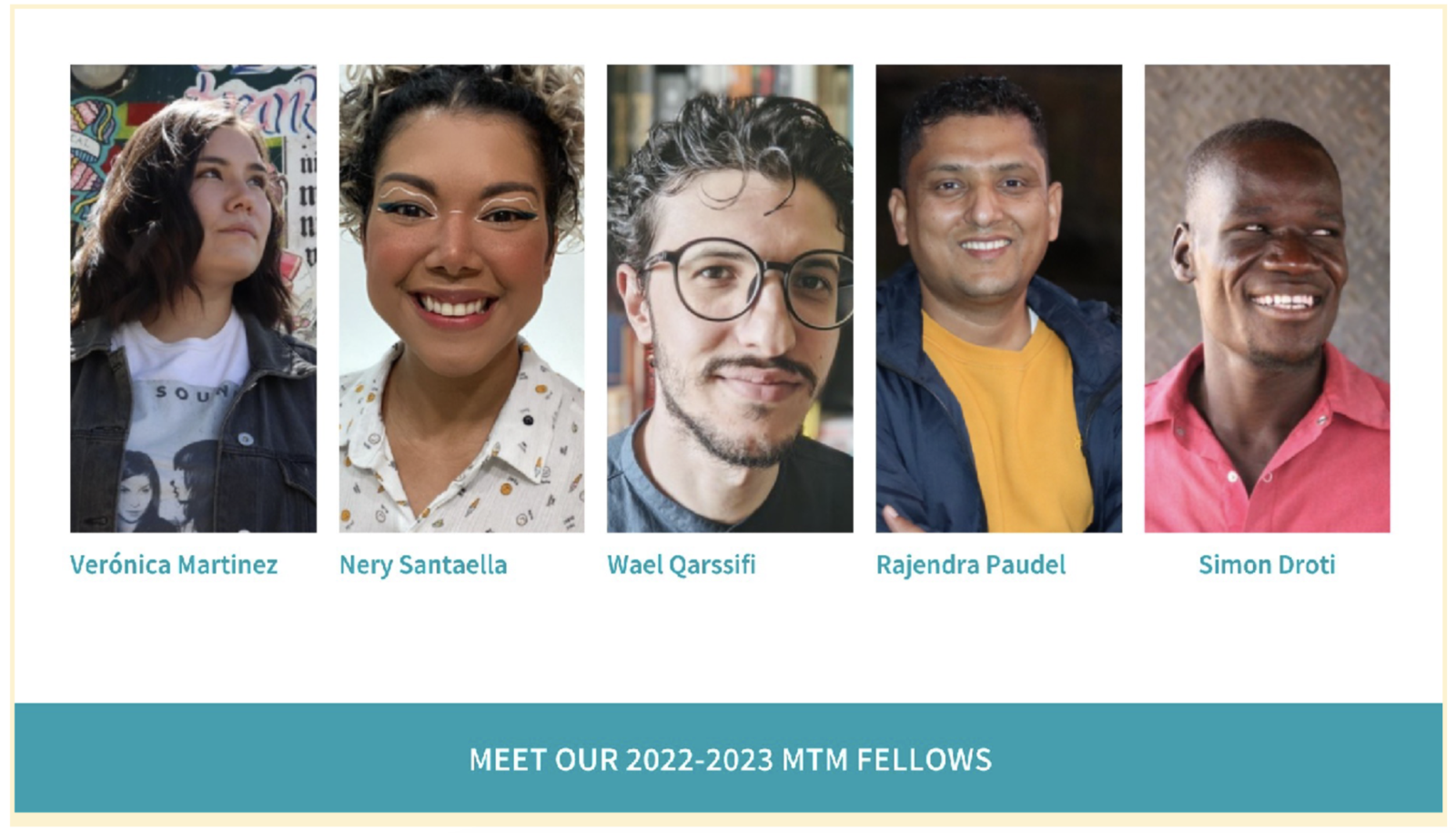Robodogs at the border; 7,000 students deported because of a faulty algorithm; drones instead of maritime rescue. What unites these examples? Border technologies now impact every single aspect of migration. Iris scans in refugee camps, AI lie detectors at the border, and the social media monitoring of refugees are just some of the new experimental projects occurring at rapid speed, with little regulation and oversight, as our report with the UN OHCHR recently found. But how can human rights practitioners better illuminate the reality on the ground and strengthen the agency and dignity of people crossing borders? And how do people on the move resist these experiments?
At the Migration and Technology Monitor (MTM), we try to build a different world—together.

The Migration and Technology Monitor is a research archive, a platform, and a community. We first had the privilege to start this idea in 2021 and watch it grow and change into a project that works toward a new understanding of borders and technology. Operating in four languages, we launched a first-of-its-kind fellowship program last year for people on the move to tell their own stories about the impacts of surveillance and how to use technology to level the vast power differentials in spaces like refugee camps and sites of humanitarian emergency. From Venezuela to Mexico to Uganda to Nepal to Malaysia, our fellows are journalists, data analysts, and dreamers in situations of displacement. As our community slowly grows, we are proud to continue with a second cohort of fellows beginning in the spring of 2024.
Our project is also guided by broader foundational public interest questions, such as: Whose perspectives matter when talking about innovation, and which priorities take precedence? What does critical representation and meaningful participation look like—representation that puts people’s agency first and works against asymmetries of power, knowledge, and resources? Are human rights framings enough, or do they also silence the systemic, racist, historical, and collective nature of these harms?
Ultimately, people with lived experiences of migration must be the ones interrogating both the negative impacts of technology and the creative solutions that innovation can bring to the complex stories of human movement.
What does practicing meaningful participation look like?
By centering care and the co-creation of community, we strive to have a lasting impact on people’s lives that goes far beyond the individual—connecting the disparate threads of this vital work. Participatory design is a foundational pillar of our methodology—there is so much talking “about” affected communities rather than meaningfully shifting power dynamics and ceding space for people on the move to be the experts. From journalism to research to storytelling to policy and governance conversations, the MTM strives to firmly place people on the move in the driver’s seat—and to build some new, more transformational roads along the way!
For example, our participatory methodology involves our fellows in all major decisions regarding the program, and the selection process is a great example of how we work. The current fellows are involved in every step of choosing the new cohort— creating the rubric used to determine the shortlist, discussing each candidate in detail in a seven-hour-long online meeting, interviewing a selection of eight candidates, and choosing the final five. Our fellow colleagues are the ones who are building the MTM community at every step—and we are iteratively learning with and from them about how to better refine our participatory methodologies.
How do we build a different world?
Our emphasis is on creative, responsible, and impactful ways of educating the public and empowering communities, advocates, and public officials on the human rights implications of the situations documented by the MTM, working from a decolonial and trauma-informed perspective that decenters the so-called Global North as the locus of expertise. Our collaborative project emphasizes the experiences and human rights of people crossing borders. However, we also highlight how the human rights situation of non-citizens is intimately linked to everyone’s human rights situation, no matter their migration background.
At the Migration and Technology Monitor, we are lawyers, journalists, filmmakers, data analysts, researchers, and storytellers, all compelled to try and build a different world. Our work is slow and intentional, unraveling strands of power and privilege, technologies and laws, story and memory that make up the complexities of human movement across borders. We know that our concerns around technological experimentation and use will not be resolved in the short term. As such, our long-term vision is to create a sustainable initiative that fosters deep community commitments with people on the move and sustains our work for the years to come.

